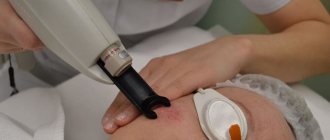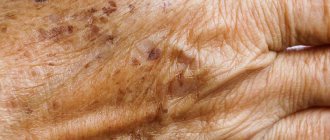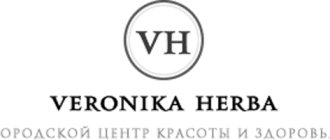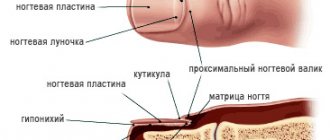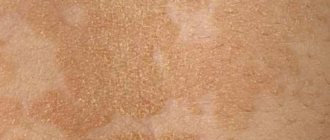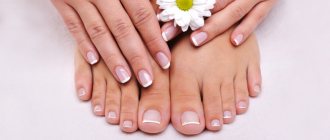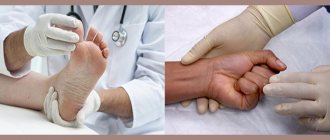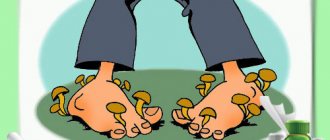Laser treatment of nail fungus is a popular and effective method practiced by many medical centers specializing in the treatment of various infections and lesions of the skin and matrix. The laser copes well with mycosis and its derivatives.
Onychomycosis (mycosis), or, as it is simply called, fungus, is a disease that affects the horny part of the nails or the skin. It is bacterial in nature and is caused by microscopic dermatophyte fungi.
Fungus is not only a cosmetic defect, but also a disease that may indicate the presence of more serious medical problems in the body. It is easy to catch a fungal infection; such a possibility can await you in public swimming pools, saunas, gyms, on the beach or at the household level. If one of the family members has had a fungal infection, then the spores of the pathogen can persist on house shoes, carpets, towels, and in the bathroom.
The fungus is also caused by:
- poor quality and uncomfortable shoes;
- nail extensions;
- failure to comply with personal hygiene rules;
- nail plate injuries.
The risk of onychomycosis increases with age, but even children can contract it from adults.
Nail mycosis is most often caused by three types of fungi:
- yeast mushrooms;
- mold fungi (different types);
- dermatophyte fungi.
The frequency of fungal infections has the following ratio:
| Genus of mushrooms | Leg lesions | Hand damage |
| Mold | 70-80% | 30-40% |
| Yeast | 6-10% | 40-55% |
| Dermatophytes | 10-20% | 10-20% |
| Other | 3% | 2% |
Today, there are several types of treatment for mycosis:
- therapy (taking pills);
- local symptomatic treatment (ointments, gels, varnishes);
- hardware method (influence on mycelium with a reagent);
- laser treatment.
In the last ten years, the method of eliminating mycosis with a laser has become most widespread. Laser radiation penetrates into the deep layers of the nail plate (matrix) or dermis and completely kills the mycelium (mycelium), without injuring the nail or causing any discomfort to the patient.
Laser treatment is a very effective method; the patient notices the first results as the nail grows.
Treatment of nail fungus with laser
A beam of light directed by a laser penetrates the affected area and destroys cells using heat. The surrounding healthy tissue remains intact.
Why is laser preferable to other treatment methods?
- Laser treatment of nail fungus is recommended when other means no longer help.
- Unlike antimycotic ointments and medications, laser gives immediate results and has no side effects.
- The treatment is safe and painless. The laser is equipped with a cooling system that prevents tissue overheating.
Preparing for treatment
Before signing up for this procedure, you must visit a specialized specialist and accurately determine the correctness of the diagnosis and the need for treatment. Typically, the doctor takes a scraping and performs a microscopy to determine the presence of pathogenic fungi.
There are no strict preparation rules for the procedure, but you should follow these recommendations:
- wash your hands and feet thoroughly with antibacterial gel;
- if there is a varnish coating, remove it;
- if you have onychogryphosis (thickening of the nail), you should contact a podiatrist and remove all layers;
- For the procedure, if it is performed on your feet, take a pair of clean socks, which you will put on after the session.
Advantages of laser treatment for onychomycosis:
- the procedure takes no more than 30 minutes;
- no blood pressure control required;
- laser exposure does not cause pain;
- the laser beam penetrates into the deep layers of the skin and destroys all infected cells;
- laser treatment is not dangerous for allergy sufferers;
- The laser is effective against all types of fungus.
- However, laser removal is not for everyone. This method should be avoided by pregnant women, people with diabetes, cancer or severe chronic diseases.
Indications
Laser treatment of mycosis is carried out in the clinic by a specialist who will fully prepare the patient for this procedure and tell you how to maintain the results of the procedure so as not to become infected again.
Indications for using laser are:
- extensive foci of fungus;
- ineffectiveness of conservative treatment;
- inability to use local antifungal drugs;
- allergic reactions to drugs;
- severe damage to the nail plates and matrix on the hands and feet.
Result of laser treatment for nail fungus
The effectiveness of the treatment is assessed as the nail grows - this usually takes 6-9 months. To maintain immunity and kill any remaining fungal spores, or if the infection may spread to other fingers, your doctor may prescribe antifungal medications.
After removing the fungus using a laser method, patients have a positive result for at least a year. To prevent the disease from returning, it is enough to follow simple hygiene rules and monitor the condition of your legs and feet. According to research results, onychomycosis disappears forever in 80% of patients.
Contraindications
Like any method, laser intervention has contraindications:
- acute inflammatory processes;
- oncological diseases;
- infections of viral etiology;
- diabetes;
- bearing a child and lactation period;
- streptoderma;
- connective tissue diseases;
- incompatibility with taking other medications;
- disorders of the immune system and use of immunomodulators;
- epilepsy;
- psychoemotional disorders.
Also prohibited for starting treatment are peeling and visiting a solarium. You need to wait a couple of weeks before starting laser treatment for mycosis.
It should also be noted that the laser is not used immediately after surgical removal of internal organs. Treatment can only be carried out after complete recovery.
Standard treatment methods
They include: external use of antimycotic and fungicidal agents, systemic use of antimycotic agents. As well as hardware techniques: mechanical removal of hyperkeratotic masses using hardware pedicure, galvanic baths with antifungal agents, UV therapy.
Such treatments provide inconsistent results with the risk of reinfection. Generally speaking, limitations of current therapeutic options include: inadequate spectrum of activity, lack of efficacy, poor penetration into the nail plate/matrix, various drug interactions, inadequate pharmacokinetic profile, excessive costs, recurrence of infection and duration of treatment.
When choosing treatment, consideration should be given to the type of lesion, number of nails damaged, type of fungal agent, as well as cost and patient compliance with the treatment regimen.
Thus, the present time has dictated the need for a new tactical approach to the treatment of onychomycosis, which will be pathogenetically substantiated and strictly selective.
Diode
The wavelength of the diode laser system is 1064 nm. The beam penetrates tissue to a depth of 7 mm, heats fungal pathogens to 42-45 °C and evaporates tissue affected by mycosis. Healthy areas are not affected.
Diode equipment is rarely used to remove fungus. It causes discomfort during therapy.
The procedure will be cheaper than treatment with other types of laser. But it sometimes takes up to 8 sessions to completely eliminate the problem.
Signs of fungal infection
Before starting treatment for the disease, you need to make an accurate diagnosis. Signs of fungal infection vary depending on the type of fungus. This helps the doctor to predict the type of pathogen during a routine dermatological examination:
RUBROPHYTIA:
- All toenails are damaged,
- The fungus affects the entire nail, top, bottom edge, side surfaces,
- Yellowish and white stripes appear in the thickness,
- Hyperkeratosis leads to thickening of the nail,
- The shade of the nails changes and becomes yellowish,
- Brittleness appears, the edge of the nail becomes uneven and sharp.
Epidermophytosis:
- Only the big toe and little toe are affected,
- The fungus is localized on the entire surface of the nail,
- The remaining symptoms are similar to rubrophytia.
NAIL CANDIDOSIS:
- Only the distant edge of the nail plate is damaged,
- The nail becomes, the edge breaks off on the side and the nail has a characteristic beveled cut,
- The color of the nail changes from yellow to brown,
- The skin around the nail is inflamed, painful and may contain purulent discharge.
NAIL MOLD:
- Only in old age
- Nail color black, gray, yellow-green
- Deformation of the nail in the form of a pointed cone,
- Big toes suffer.
NOTE! Knowing the main symptoms of onychomycosis will allow you to recognize the disease at an early stage and consult a doctor in time. With a long course of the disease, serious consequences and complications may arise, requiring long-term therapy and even surgical intervention. Separation of the nail from the nail bed is a common sign of the disease, occurring in advanced cases, making it impossible to wear shoes or play sports.
Neodymium laser
The neodymium Nd:YAG laser is a non-ablative laser, which means that the laser radiation used does little to no damage to the epidermis. The operation of a neodymium laser is based on thermal effects, but no “open wound” remains after such an effect; the destroyed tissue does not evaporate, but remains in the skin. When exposed to a neodymium laser on the skin or surface of a scar, the laser beam penetrates inside and has a selective effect on the internal structures of the dermis or scar tissue.
Erbium
Erbium laser helps against nail fungus in 5-6 procedures. The treatment is called “cold” because the installation does not cause burns or tissue injury. The equipment is used in difficult cases when it is necessary to cope with mycosis in a hard-to-reach place or in an advanced stage.
The beam seals the vessels that the fungus feeds on. Microorganisms cannot develop further and die. Erbium laser equipment operates more delicately than diode laser equipment. But the nail is still partially destroyed.
Causes of the disease and its prevention
The main reason for the appearance of pathogenic fungi on the nails is damage to the skin of the foot or nail plate. In such cases, treatment of the pathology must begin immediately, without delaying it for a long time.
Other factors leading to the occurrence and development of this disease include:
- direct contact with some household items for public use: rubber shoes or rugs, accessories for manicure and pedicure;
- excessive moisture caused by wearing synthetic socks or stockings;
- frequent use of false nails;
- diseases of the endocrine system;
- immunodeficiency diseases.
However, this disease can be prevented if you follow a number of simple rules:
- when visiting swimming pools and saunas, you must have individual rubber shoes with you;
- promptly eliminate calluses and dry feet;
- avoid minor injuries and wounds of the feet and hands;
- use talc and powders for excessive sweating of the feet;
- in case of immunodeficiency, increase immunity;
- change socks or stockings every day.
Such simple actions can be used as preventive measures to prevent onychomycosis. If you strictly follow these rules and strictly follow them, then there will be no need to treat the disease [2][3].
What is unique about the FOTONA SP SPECTRO laser system?
FOTONA SP SPECTRO is a unique patented laser system created more than 40 years ago in Slovenia by Fotona, a recognized world leader in laser production. Fotona's innovative developments have made it possible to achieve a unique combination of efficiency and safety of laser procedures. The FOTONA SP SPECTRO device can be used to perform more than 50 types of procedures, allowing you to solve a wide range of aesthetic problems. An entire multidisciplinary laser clinic and a huge number of different procedures are collected in one mobile building.
The areas of application of FOTONA SP SPECTRO are truly diverse:
- “Cold” and “hot” peelings.
- Laser dermabrasion.
- Fractional laser rejuvenation of the face, décolleté, etc.
- Deep dermal rejuvenation.
- Laser hair removal for all hair types (by AREA).
- Laser treatment of nail onychomycosis.
- Removal of viral warts.
- Aesthetic polishing.
- Resurfacing of scar tissue.
- Superficial non-ablative rejuvenation.
- Fractional rejuvenation using FRAC3 technology (BY AREA).
- Laser treatment for acne.
- Laser removal of arterial and venous vessels.
Reasons for appearance
A healthy, strong immune system protects the body from the invasion of fungal infections. As soon as the protective immune forces weaken, there is a danger of invasion and active proliferation of microbes. Conditions under which fungal infections most often develop:
- weakened immune system;
- long-term use of antibiotics;
- metabolic disease;
- endocrine pathologies;
- frequent visits to public places (baths, saunas, water parks);
- wounds on the skin of the legs, abrasions, corns;
- elderly age.
Nail fungus is caused by one of the types of microorganisms: yeast microorganisms (5% of cases), dermatophytes (common most often), mold fungi (rarely). Often the infection is caused by parasitic fungi - dermatophytes, of which Trichophyton rubrum (90%) stands out.
A person becomes infected through contact and household contact. The initial signs of damage are the appearance of white or yellow spots in the thickness of the nail. Spores of the causative agent of mycosis can be on the floor, on towels, on rugs, in shoes. Warm places with high humidity potentiate the growth and reproduction of fungi.
